Explore more in-depth publications from Vietnam Commodity Exports – featuring market analysis, trade trends, and strategies for key sectors like coffee, cashew, and fruit. Updated data and bilingual content designed for exporters and global investors.
INTRODUCTION
Market Size: Numbers that Speak for the Global “Thirst”
Explore Key Consumption Markets
Import Volume and Value of Green Coffee by Country/Region
Vietnam’s Coffee Export Performance (2020 – 2024)
Main Export Markets for Vietnamese Coffee
Production Costs & Profit Margins of Coffee in Vietnam
PART I: ANALYSIS OF GLOBAL COFFEE CONSUMPTION DEMAND
PART II: DECRYPTING THE MULTI-BILLION DOLLAR COFFEE IMPORT MARKET
PART III: ANALYSIS OF VIETNAM’S COMPETITIVE ADVANTAGES
PART IV: ANALYSIS OF VIETNAM’S COMPETITORS
PART V: COMPARATIVE TABLE OF COMPETITIVE ADVANTAGES – VIETNAM VS. KEY RIVALS
PART VI: GLOBAL COFFEE SUPPLY CHAIN TRENDS & DISRUPTIONS
PART VII: IMPORT STANDARDS & TARIFFS IN MAJOR MARKETS
PART VIII: DIRECTORY OF COFFEE EXPORTING PRODUCERS BY REGION
BÁO CÁO XUẤT KHẨU CÀ PHÊ 2024 – 2025

61,13 USD
VIETNAM COFFEE EXPORT REPORT 2024 – 2025
- Pages: 115
- Data: 2020 – March 2025
- Language: Vietnamese
- Format: PDF
BÁO CÁO XUẤT KHẨU CÀ PHÊ 2024 – 2025
- Note: Customized Report is to edit/add/delete reports as per your business requirement
INTRODUCTION
As the global coffee industry enters a period of significant volatility in supply, demand, policy, and geopolitics, access to accurate, up-to-date, and in-depth data is becoming essential for businesses, exporters, policymakers, and investors. This report is designed to provide a comprehensive overview of the global coffee consumption and import markets, Vietnam’s competitive position, as well as the emerging trends and risks that are shaping the future of the global coffee supply chain.
Structured into eight key sections, the report not only presents the latest data but also offers in-depth analysis of critical influencing factors such as production costs, futures contracts, the EU’s EUDR regulation, climate volatility, and the rising roles of countries like China, India, and Uganda.
We hope this report will serve as a valuable tool for enterprises in crafting effective strategies, seizing opportunities, and minimizing risks in the global coffee business.
Let’s start with a staggering fact: over 2.25 billion cups of coffee are consumed every single day across the globe. That amounts to nearly 400 billion cups per year — an undeniable testament to coffee’s deep-rooted presence in everyday life.
In terms of value, the global coffee market revenue surpassed USD 245.2 billion in 2024, marking a significant milestone for the industry. Yet this figure appears to be only the beginning of a remarkable growth journey. With a stable Compound Annual Growth Rate (CAGR) of 4.72%, experts project the market will expand dramatically to reach USD 365.02 billion by 2033. This sustained growth signals not only the immense potential but also the enduring vitality of the coffee industry — one of the world’s oldest global trades.
A World That “Drinks Up” Every Bean Produced
What drives this irresistible demand? Let’s examine the supply-demand balance:
Production: In the 2024/2025 crop year, global coffee production is forecast to reach 174.9 million 60-kg bags, an increase of 6.9 million bags compared to the previous season.
Consumption: Over the same period, global consumption is set to hit 168.1 million bags, rising by 5.1 million bags.
What’s truly remarkable is that only about 10 million bags are expected to be held in reserve — the lowest stock level since 2018. This small buffer, when compared to the massive demand, reveals a stark truth: the world is virtually consuming every bean it produces. Demand shows no signs of slowing down — in fact, it’s projected to rise steadily, especially as the global middle class and knowledge workforce continue to grow. As mental workload increases, people are increasingly turning to coffee’s stimulating effects to stay alert. The more pressure they face, the more coffee they consume.
The global green coffee bean import market is a multi-billion-dollar industry, with the European Union and the United States standing out as the two largest importers. Notably, inter-producer trade — the exchange of green beans between coffee-producing countries — also plays a significant role, accounting for approximately 7% of total global coffee exports, according to the International Coffee Organization (ICO).
Within this intra-industry trade:
Green Robusta beans dominate with 59% share (nearly 5 million bags) of the volume traded between producers.
Beans destined for instant coffee production account for 21% (about 1.7 million bags).
Arabica beans make up the remaining 19%.
Geographic Production Breakdown:
South America contributes 41% of global coffee output.
Southeast Asia follows with 27%.
Africa accounts for 17%.
Central America produces about 10%.
This concentration of production in specific regions results in a heavy economic dependence on coffee exports for many producing nations. As such, they remain highly vulnerable to unpredictable global market shifts — including fluctuations in prices, changes in consumption patterns, and broader geopolitical or economic developments.
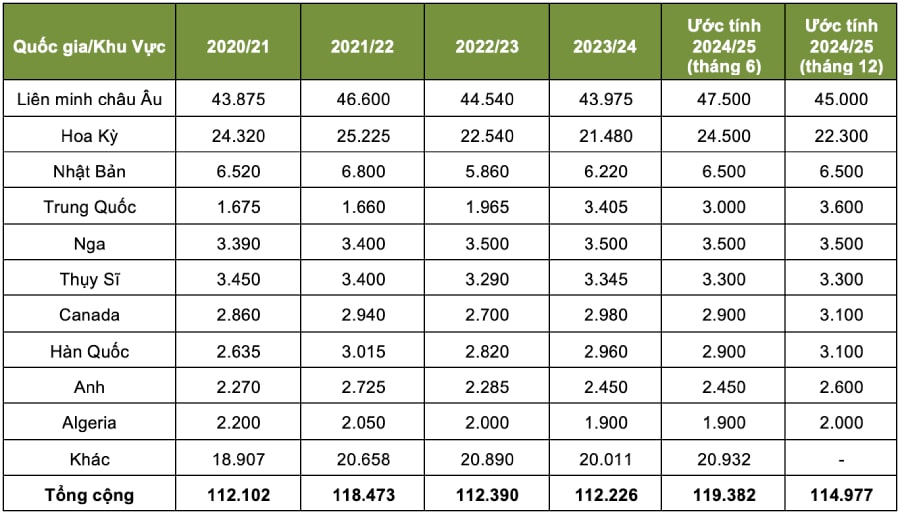
Vietnam’s Coffee Export Performance (2020–2024)
Vietnam’s agricultural economy relies heavily on strategic export commodities like pepper, cashew, and especially coffee. As of 2024, Vietnam maintains its position as the world’s second-largest coffee exporter, trailing only Brazil. The country commands approximately 19%–21% of global market share, and holds the top spot as the leading producer of Robusta coffee worldwide.
Coffee is a vital pillar of Vietnam’s rural economy, supporting over 600,000 farming households and engaging around 2.6 million workers across the coffee value chain — equivalent to 4.8% of the country’s working-age population. This labor-intensive sector plays a critical role in job creation, income generation, and socio-economic stability in many highland regions.
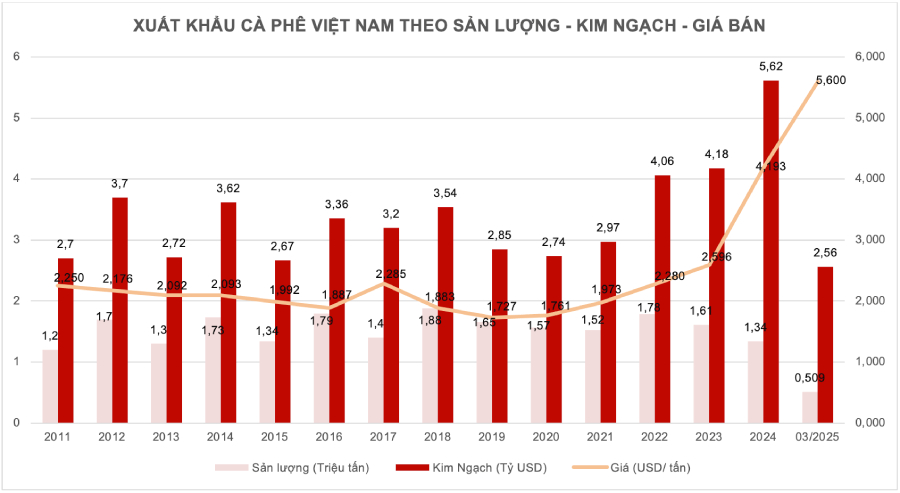
Figure 3: Vietnam’s Coffee Export Performance (2011 – March 2025) (Source: General Department of Customs, Vietnam)
From 2020 to 2024, Vietnam’s coffee export value nearly doubled, rising from USD 2.97 billion to USD 5.62 billion — a significant 84.5% increase. This growth was primarily driven by surging global coffee prices, even though export volumes fluctuated due to seasonal crop yields.
Key Milestones by Year:
2020–2021:
- Export value: USD 2.97 billion
- Volume: 1.52 million tons
- Year-over-year value ↑ 9.4%, volume ↓ 2.7%
2021–2022:
- Value hit a new record: USD 4.06 billion
- Growth in both volume and unit price
2022–2023:
- Volume declined 9.5% to approx. 1.61 million tons
- Average export price surged 15.5% to USD 2,596/ton
- Export value still grew to USD 4.18 billion
2023–2024:
- Historic high of USD 5.62 billion
- Robusta prices surpassed USD 4,193/ton, boosting revenue
- Volume dropped 18.8%, but value soared 29.1%
Vietnam’s Major Coffee Export Markets
Vietnam’s coffee exports are geographically diversified, but five key markets dominate:
EU: Largest destination, benefiting from EVFTA preferential tariffs
United States: High demand for Robusta in instant and specialty blends
Japan: Focus on quality; stable demand for processed coffee
Russia: Emerging buyer, increased purchases during price spikes
South Korea: Consistent importer driven by high instant coffee consumption
Vietnam’s competitive pricing and Robusta dominance continue to strengthen its position in both traditional and new markets.
Main Export Markets of Vietnamese Coffee
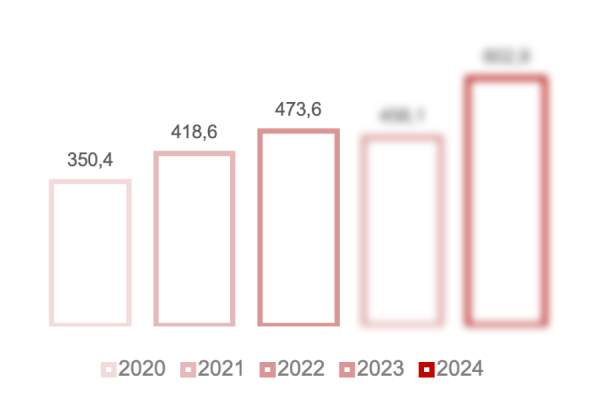 Figure 6: Vietnam’s Coffee Export Value to Germany (Unit: Million USD)
Figure 6: Vietnam’s Coffee Export Value to Germany (Unit: Million USD)
Germany – Vietnam’s Key Strategic Partner
From 2020 to 2024, Vietnam’s coffee exports to Germany surged from USD 350 million to nearly XXX million, marking an impressive growth of over 72%. As Europe’s largest coffee-consuming market, Germany maintains a stable demand, with a strong emphasis on sustainably produced and high-quality coffee. For many consecutive years, Germany has consistently been Vietnam’s largest coffee export market.
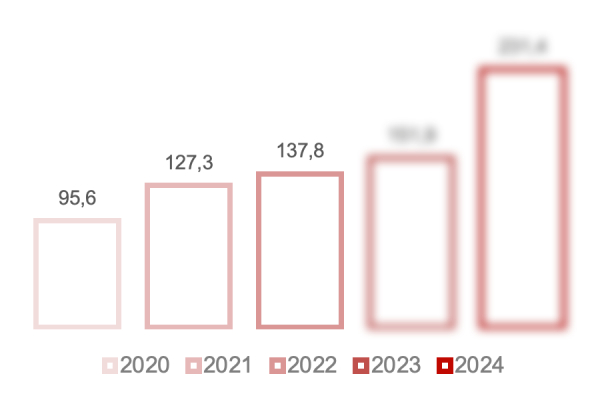 Figure 11: Vietnam’s Coffee Export Value to the United States (Unit: Million USD)
Figure 11: Vietnam’s Coffee Export Value to the United States (Unit: Million USD)
United States – A Large But Highly Competitive Market
Vietnam’s coffee exports to the U.S. saw steady growth from USD 254.9 million in 2020 to XXX.X million in 2024, an increase of approximately 27%. As the world’s largest coffee consumer, the U.S. is showing an increasing preference for Robusta beans, especially in the production of ready-to-drink (RTD) and instant coffee products — presenting a strategic opportunity for Vietnam to expand its market share.
However, the potential imposition of higher tariffs on Vietnamese coffee by the U.S. starting mid-2025 poses a major challenge. It could raise product prices, reduce price competitiveness, and weaken Vietnam’s position relative to other key suppliers such as Brazil, Colombia, and Mexico.
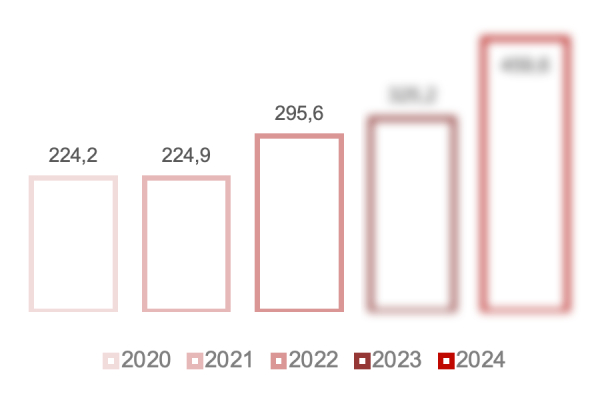 Figure 7: Vietnam’s Coffee Export Value to Italy (Unit: Million USD)
Figure 7: Vietnam’s Coffee Export Value to Italy (Unit: Million USD)
Italy – A Key Market for Coffee Blending
Vietnam’s coffee export turnover to Italy more than doubled, rising from USD 224 million in 2020 to XXX million in 2024, with a total volume of 127,724 tons. In just the first two months of 2025, exports continued their strong momentum, reaching USD 171 million, a 31% increase year-on-year. Vietnam’s coffee prices in the Italian market also reached premium levels. In March 2025, the average import price hit X,XXX USD/ton, approximately 10% higher than the average price of other supplying countries.
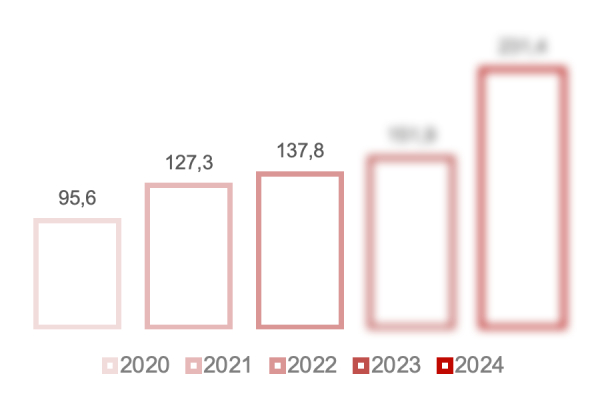 Figure 13: Vietnam’s Coffee Export Value to China (Unit: Million USD)
Figure 13: Vietnam’s Coffee Export Value to China (Unit: Million USD)
China – A Rapidly Growing Market
Vietnam’s coffee exports to China grew significantly, from USD 95.6 million in 2020 to XXX.X million in 2024. China has emerged as a fast-growing coffee market, with an annual growth rate exceeding 10%, driven by the expanding middle class and the rising popularity of coffee culture, particularly among the youth. This offers tremendous opportunities for Vietnam to boost exports, especially in high-quality Arabica and premium instant coffee segments.
However, domestic competition is also intensifying, with the rise of locally produced brands such as Yunnan coffee, alongside increasing demands for quality standards and import compliance procedures.
Coffee Production Costs & Profitability in Vietnam
Around 80%–90% of Vietnam’s coffee cultivation area is managed by smallholder farmers with less than 2 hectares, making the production system heavily reliant on traditional practices, manual labor, and chemical inputs such as fertilizers.
For both small- and medium-scale farms, the majority of production costs are concentrated in agricultural inputs (fertilizers, irrigation, pesticides) and labor. The high use of chemical fertilizers combined with limited adoption of mechanization or modern technologies keeps production costs elevated. In recent years, the volatility in input prices and wages has further increased total cultivation costs, putting pressure on farmers—especially during periods of low coffee prices.
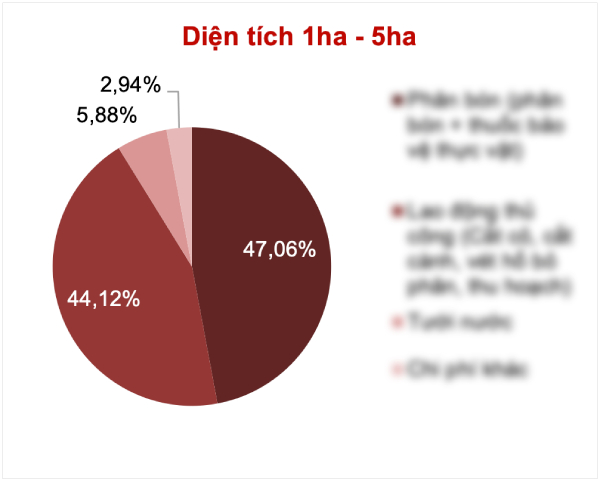
Smallholders (<1 ha):
Small farms often rely on family labor to minimize hired labor costs, with hired labor accounting for XX.XX% of total costs—or even 0% if no external labor is used. NPK fertilizers represent the largest cost component (XX.XX%), followed by organic and livestock manure (X.XX% each), highlighting the central role of agro-inputs in overall production expenses. Other items like pesticides, irrigation, and depreciation account for less than XX% of the cost structure. This approach allows better cost control but may limit productivity due to insufficient investment in machinery and technical upgrades.

Medium to Large Farms (≥1 ha):
At larger scales, farms typically need to hire additional labor, especially during harvest, causing labor costs to account for a significantly higher share of total costs (e.g., harvesting alone may represent up to XX.XX%). Fertilizer remains the largest expense, at approximately XX.XX%, similar to smaller farms. However, absolute costs for irrigation, weeding, and pruning are also higher due to the increased area, even though their relative shares may range from X% to X%.
Vietnam’s coffee production cost structure remains relatively fixed, but there is substantial potential for optimization, particularly through:
- Sustainable agricultural practices
- Reduced dependence on chemical fertilizers
- Stronger integration into value chains
These improvements can help enhance economic returns and resilience for Vietnamese coffee growers.
TABLE OF CONTENTS
1. Market Size: Numbers Behind the Global Coffee Craze
2. Key Consumption Markets
2.1 United States – The World’s Largest Coffee Consumer
2.2 European Union – Per Capita Coffee Capital
2.3 United Kingdom – Demographics, Preferences & Trends
2.4 Europe’s Domestic Supply Capacity
2.5 China – Awakening Potential in a Billion-Consumer Market
1. Green Coffee Import Volumes and Values by Country/Region
2. Roasted Coffee Import Volumes and Values by Country
3. Instant Coffee Import Volumes and Values by Country
1. Vietnam’s Coffee Export Performance Over 5 Years
1.1 Export Value (2020–2024)
1.2 Domestic and Export Coffee Price Trends in 2024
1.3 Key Price Drivers (2020–2024)
1.4 Vietnam’s Coffee Export Structure (Crop Year 2023–2024)
1.5 Major Export Destinations for Vietnamese Coffee
2. Coffee Production Costs & Profitability in Vietnam
2.1 Cost & Profit Structure of Coffee Farming in Vietnam
2.2 Cost & Profit Structure of Processing & Trading Units
2.3 Value Addition by Export & Processing Enterprises
2.4 Logistics Costs
3. Vietnam’s Coffee Supply Chain Analysis
3.1 Farmers – Vital Yet Vulnerable
3.2 Intermediaries – The Connecting Link
3.3 Cooperatives – Collective Strength
3.4 Processing & Exporting Enterprises
3.5 State-Owned Coffee Plantations
4. Key Coffee Varieties in Vietnam
4a. Traditional Robusta (High-Yield TR Lines): Solid Base, Ongoing Needs for Improvement
4b. Arabica: A “Hidden Gem” with Cultivation Challenges
4c. Robusta Thien Truong: A “Rising Star” of Agri-biotech
1. Overview of the World’s Largest Coffee-Producing Countries
2. Brazil – The Global Coffee Powerhouse
2.1 Brazil’s Coffee Supply & Demand (2022–2025)
2.2 Arabica vs. Robusta Share
2.3 Brazil’s Export Structure by Product Type
2.4 Cultivated Area by Region
2.5 Productivity Variances by Variety, Region & Climate
2.6 Farming Models: From Family Farms to Agribusiness Giants
2.7 Brazil’s Export Markets
2.8 Brazil’s Free Trade Agreements
2.9 Government Policies Supporting the Coffee Sector
3. Colombia – The World’s Third Largest Coffee Exporter
3.1 Coffee Supply & Demand (2022–2025)
3.2 Arabica vs. Robusta Composition
3.3 Coffee Export Structure
3.4 Cultivated Area
3.5 Productivity & Farming Structures
3.6 Major Export Markets
3.7 Free Trade Agreements
3.8 Coffee Sector Policies: Sustainability, Innovation & Value Chain
4. Indonesia – Vietnam’s Key Southeast Asian Competitor
4.1 Coffee Supply & Demand in Indonesia
4.2 Arabica vs. Robusta Composition
4.3 Export Structure & Premium Segment Potential
4.4 Cultivated Area
4.5 Productivity
4.6 Export Markets: Challenges & Opportunities
4.7 FOB Prices: Domestic Supply Balance, Specialty Differentiation & Logistics
4.8 Value Chain & Procurement Systems
4.9 Free Trade Agreements
4.10 Government Policy: Building a National Coffee Ecosystem
5. Uganda – Africa’s Largest Coffee Producer
5.1 Coffee Sector Supply & Demand
5.2 Arabica vs. Robusta Production Share
5.3 Export Structure
5.4 Expansion & Regional Shifts in Cultivated Area
5.5 Productivity Gaps & Potential
5.6 Export Markets: Strong EU Demand, New Potential, and Barriers
5.7 Free Trade Agreements
5.8 Government Initiatives & Regulations
6. India’s Coffee Sector Analysis
6.1 Coffee Supply & Demand in India
6.2 Arabica/Robusta Ratio: Trends & Challenges
6.3 Export Structure
6.4 Cultivated Area
6.5 Productivity Growth and Global Comparison
6.6 Key Export Markets: EU Dominance & Emerging Asia
6.7 India’s Free Trade Agreements
6.8 Government Policies and Current Support for the Sector
Comparative Table of Vietnam vs. Major Global Coffee Competitors
1. Coffee Price Speculation via Futures Contracts
2. Product Portfolio Shifts in the Global Coffee Market
3. Climate Impact on Coffee Yields
4. Monetary Policy & Geopolitical Disruptions
5. EU’s Postponement of EUDR Implementation
6. China’s Impact on the Global Coffee Supply Chain
1. EU Coffee Import Standards
2. U.S. Coffee Import Regulations
3. Tariff Comparison Across Major Import Markets
Top 10 Vietnamese Coffee Exporters (Crop Year 2023/2024)
List of Buon Ma Thuot Coffee Association Members
Top 50 Green Coffee Exporting Enterprises in Vietnam
Figure 1: Per Capita Coffee Consumption Worldwide
Figure 2: Top 10 Countries/Regions Importing Green Coffee Beans
Figure 3: Top 10 Countries Importing Roasted Coffee
Figure 4: Top 10 Countries Importing Instant Coffee
Figure 5: Top 10 Coffee-Importing Countries (2020–2025)
Figure 6: Vietnam’s Coffee Export Turnover – Crop Year 2023–2024
Figure 7: Cost of Maintaining 1 Hectare of Coffee in Vietnam
Figure 8: Green Coffee Prices in Vietnam (Robusta) from 2019 to March 2025
Figure 9: Coffee Farming Profitability in Vietnam (1–5 Hectares)
Figure 10: Coffee Farming Profitability on Less Than 1 Hectare in Vietnam
Figure 11: Value Addition by Processing – Export Enterprises (2019–2022)
Figure 12: Value Addition by Processing – Export Enterprises in 2024
Figure 13: Arabica Coffee Production by Country
Figure 14: Robusta Coffee Production by Country
Figure 15: Total Coffee Supply & Demand in Brazil (2022–2025)
Figure 16: Arabica/Robusta Production in Brazil (2022–2025)
Figure 17: Brazil’s Coffee Export Structure (2022–2025)
Figure 18: Brazil’s Export Markets
Figure 19: Total Coffee Supply & Demand in Colombia
Figure 20: Arabica/Robusta Production in Colombia
Figure 21: Colombia’s Coffee Export Structure
Figure 22: Colombia’s Coffee Cultivation Area (2022–2025)
Figure 23: Total Coffee Supply & Demand in Indonesia (2022–2025)
Figure 24: Arabica/Robusta Production in Indonesia
Figure 25: Indonesia’s Coffee Export Structure (2022–2025)
Figure 26: Coffee Cultivation Area in Indonesia (2023)
Figure 27: Coffee Yield in Indonesia (Kg/ha)
Figure 28: Total Coffee Supply & Demand in Uganda (2022–2025)
Figure 29: Arabica/Robusta Production in Uganda
Figure 30: Uganda’s Coffee Export Structure (2022–2025)
Figure 31: Coffee Cultivation Area in Uganda
Figure 32: Uganda’s Coffee Export Markets
Figure 33: Total Coffee Supply & Demand in India (2022–2025)
Figure 34: Arabica/Robusta Production in India (2022–2025)
Figure 35: India’s Coffee Export Structure (2022–2025)
Figure 36: Coffee Cultivation Area in India (2022–2025)
Figure 37: Comparative Competitive Advantages of Vietnam’s Coffee vs. Key Competitors
Figure 38: Certifications/Documents Required for Exporting Coffee to the EU
Figure 39: Certifications/Documents Required for Exporting Coffee to the US
Figure 40: Comparison of Green Coffee Import Standards
Figure 41: Import-Export Tariffs on Coffee in Major Markets
Figure 42: Vietnam’s Tariff Preferences Under Free Trade Agreements (FTA)
Figure 43: Top 10 Coffee Export Enterprises – Crop Year 2023/2024
Figure 44: Member List – Buon Ma Thuot Coffee Association
Figure 45: Top 50 Green Coffee Exporters in Vietnam

Vietnam Commodity Export offers comprehensive and in-depth information on Vietnam’s sourcing market, highlighting opportunities and challenges across various industries. We help international businesses find quality manufacturers and reliable suppliers in Vietnam, providing the critical insights needed to connect with the best partners and resources in the market.



